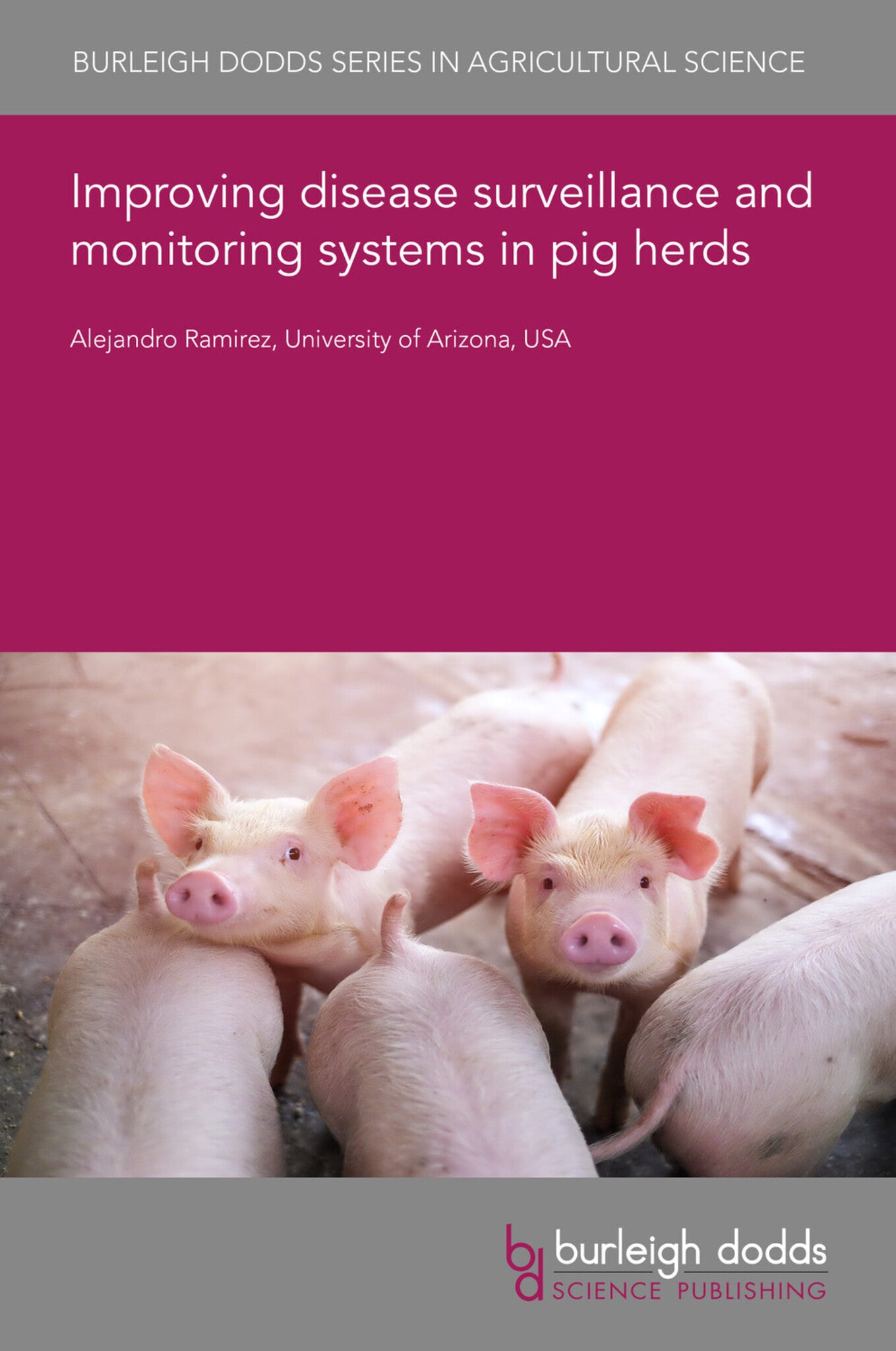We're sorry. An error has occurred
Please cancel or retry.
Improving disease surveillance and monitoring systems in pig herds

Some error occured while loading the Quick View. Please close the Quick View and try reloading the page.
Couldn't load pickup availability
- Format:
-
31 October 2022


TECHNOLOGY & ENGINEERING / Agriculture / Animal Husbandry, Animal husbandry, TECHNOLOGY & ENGINEERING / Agriculture / Sustainable Agriculture, Sustainable agriculture

1 Introduction 2 Identifying pathogens of concern 3 Defining clear goals and objectives 4 Detection target (analyte): agent or antibodies 5 Sample types 6 Collection approach 7 Frequency of sampling 8 Sample size calculations 9 Pooling of samples 10 Production parameters 11 Interpreting results 12 Classifying herd health status 13 Case studies 14 Conclusion 15 Where to look for further information 16 References



